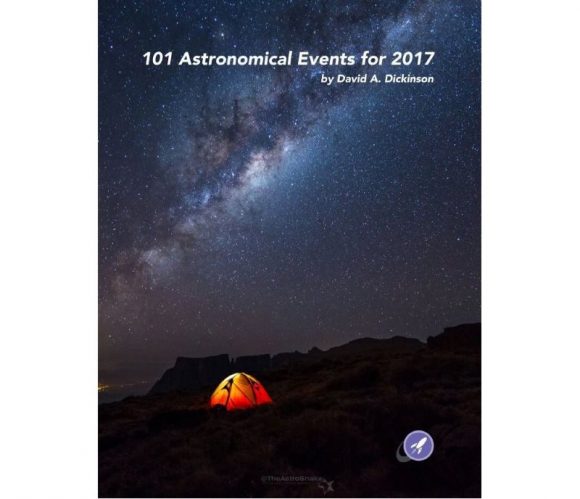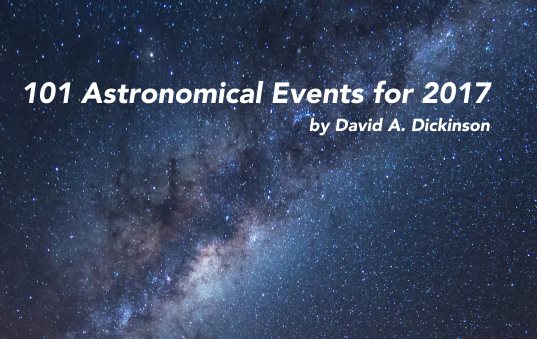
Let’s forget all about 2016, and instead look forward to the amazing 2017 we all know we’re going to have. And to help you celebrate this amazing year in space, we’re pleased to publish an entire book on what you can observe in the upcoming year: 101 Astronomical Events in 2017.
This totally free ebook was written by our own David Dickinson and contains all the predictable events coming up: the occultations, the eclipses, the meteor showers, the equinoxes, the super-moons and mini-moons. Every significant event coming up in 2017.
In addition, a few amateur astronomers like Cory Schmitz from PhotographingSpace and the Upside Down Astronomer Paul Stewart provided some of the beautiful photographs to inspire you to get outside.
Once again, this book is totally free. There’s no cost to purchase it, there are no advertisements in it. All we ask is that you get out there, enjoy the night sky with your friends and family, and take amazing pictures to share with us and the rest of astronomy community.
Well, it would also really help if you shared the book with your friends, family, astronomy club, and forums.
This is an experiment. Will you download and actually use it? If so, then expect us to release a new edition every year. If not, then, we’ll go back to the regular blog post version.
Thanks again to David for putting in an enormous amount of work 6 months ago to think through an entire year of observing, and to the readers and photographers who helped doublecheck the math to make sure it’s accurate.
Click here to download a copy in PDF format, or click here to download a copy in EPUB format.
Also, here’s a great Google Calendar link to all 101 events courtesy of Christopher Becke (@BeckePhysics)… thanks Chris!
Fraser Cain
Publisher, Universe Today


Thanks… Very good information…
A small question to Fraser:
We don’t hear from Voyager 1 for some time !
What the cause could be ?
Wonderful ! I’m really grateful. Hopefully, I can enjoy such works every year.
This is awesome Fraser, Dave, I will continue to download this treasure as long as you guys continue to publish, and so long as there is still enough strength in my index finger to double click on the mousepad.
Very nicely done. A comment: For the January observing challenge (which strangely follows the February events) suggest that Sirius B will be seen furthest away from Sirius A in 2019, but just to make that clear, 2019 is when Sirius B is furthest from Sirius A, physically (apoapsis, as correctly used in the text). But it apparent furthest separation occurs in 2025, owing to the projected orbit in the sky….
Hi Dave,
Thanks, I see where the text is a bit confusing with the wording… yes, 2019 is physical apoapis, whereas 2025 is the greatest apparent visual separation for Sirius B. Will put that inline for either a correction (I prefer to do these in batch due to the lengthy upload/download process for correcting the book) or include as errata in the 2018 edition. Good catch.
Thanks,
Dave